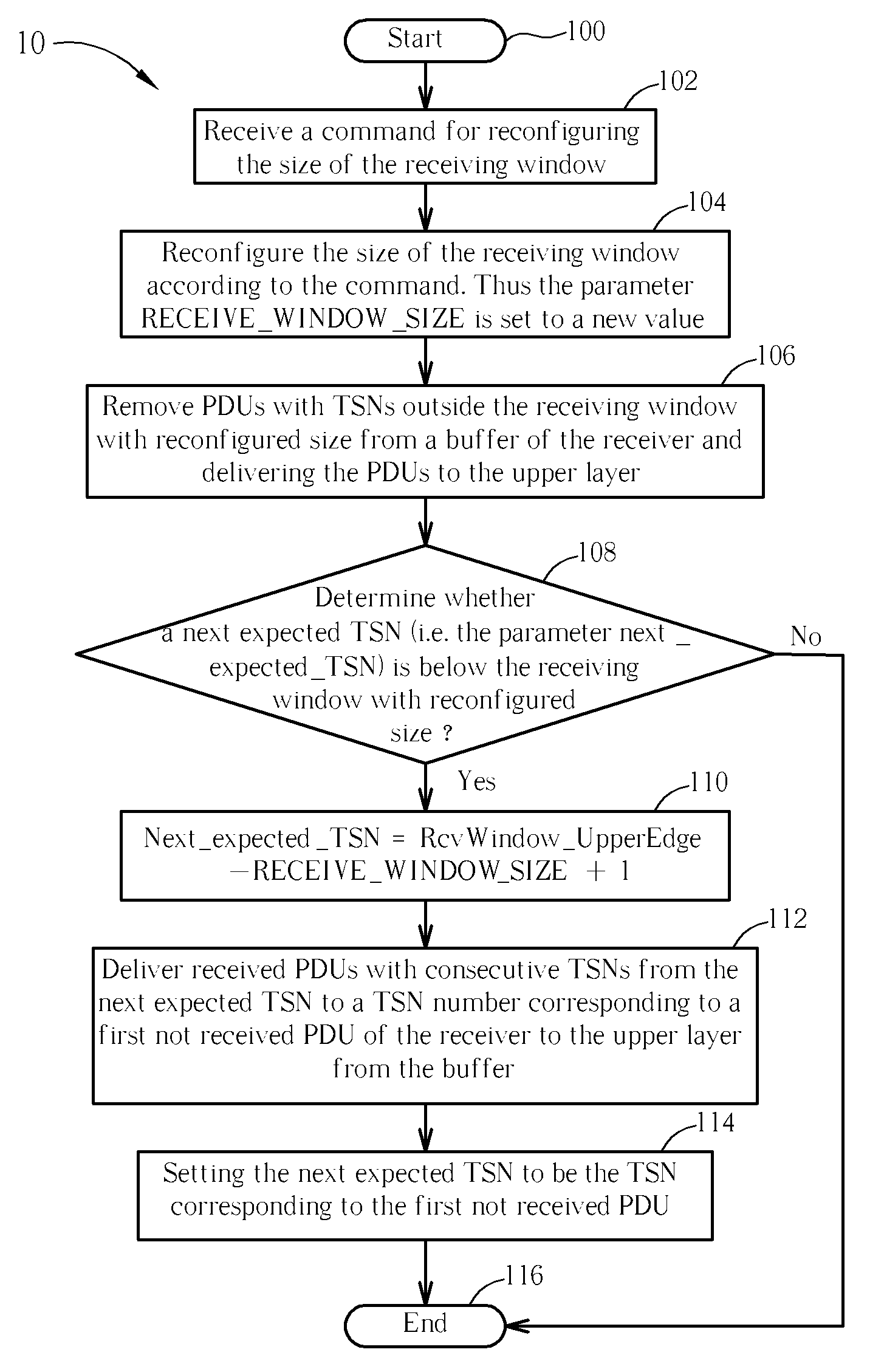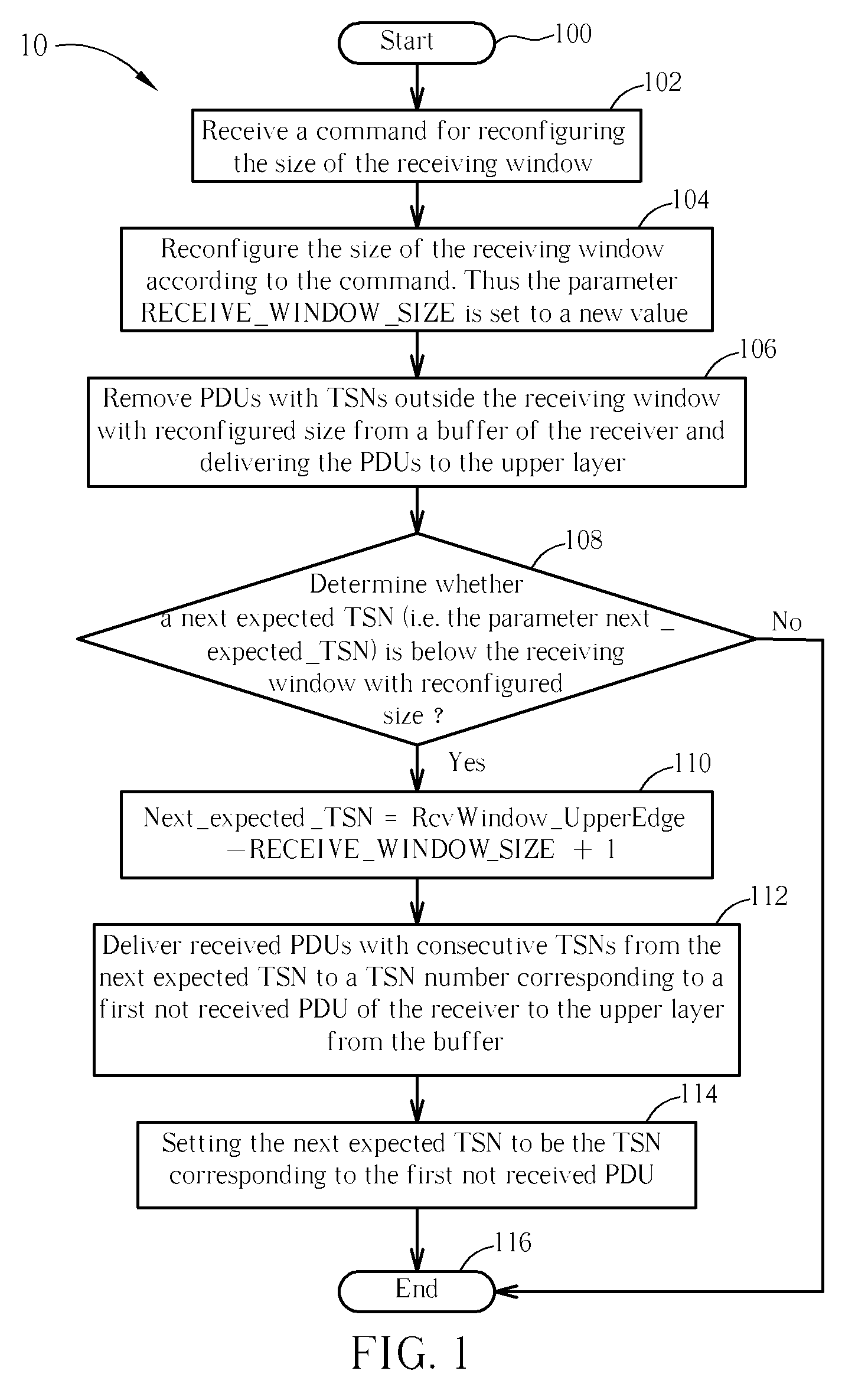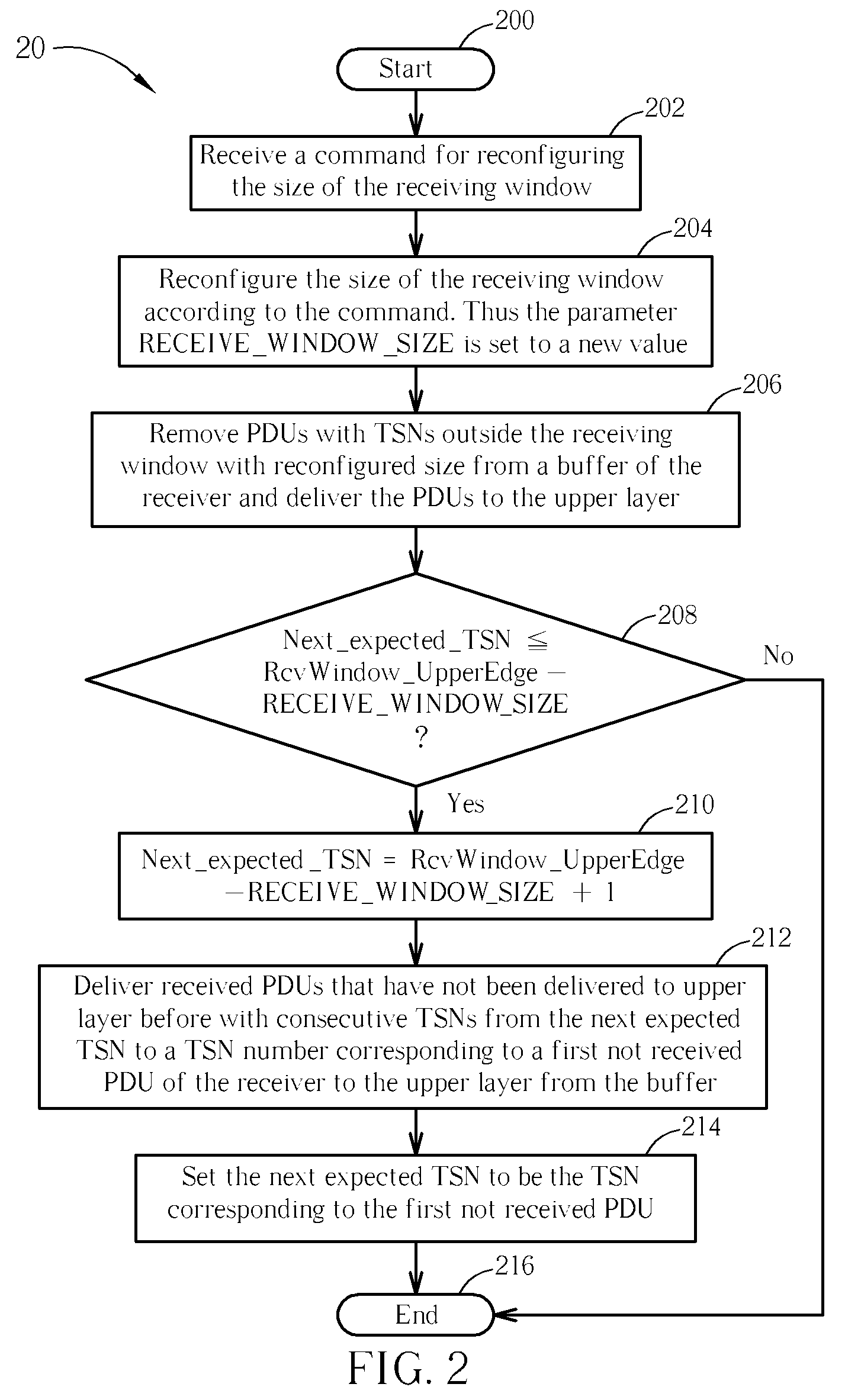Method and related apparatus for reconfiguring size of a receiving window in a communications system
a communication system and receiving window technology, applied in the field of reconfiguring the size of the receiving window in the communications system, can solve problems such as transmission errors, serious problems, and affecting transmission efficiency
- Summary
- Abstract
- Description
- Claims
- Application Information
AI Technical Summary
Benefits of technology
Problems solved by technology
Method used
Image
Examples
Embodiment Construction
[0029]The present invention applies to a receiving window of a receiver whose span and size are defined by an upper edge of the receiving window in a communications system. The following description takes the MAC-hs of the HSDPA as an example.
[0030]First of all, please refer to FIG. 3. FIG. 3 is a block diagram of a mobile communications device 300. For clarity, FIG. 3 only shows an input device 302, an output device 304, a control circuit 306, a central processor 308, a storage device 310, a program code 312, and a transceiver 314 of the mobile communications device 300. In the mobile communications device 300, the control circuit 306 executes the program code 312 stored in the storage device 310 with the central processor 308, and then controls operations of the mobile communications device 300. The mobile communications device 300 can receive signals inputted by users through the input device 302, or output signals like images, sounds etc. through the output device 304 (such as m...
PUM
 Login to View More
Login to View More Abstract
Description
Claims
Application Information
 Login to View More
Login to View More - R&D
- Intellectual Property
- Life Sciences
- Materials
- Tech Scout
- Unparalleled Data Quality
- Higher Quality Content
- 60% Fewer Hallucinations
Browse by: Latest US Patents, China's latest patents, Technical Efficacy Thesaurus, Application Domain, Technology Topic, Popular Technical Reports.
© 2025 PatSnap. All rights reserved.Legal|Privacy policy|Modern Slavery Act Transparency Statement|Sitemap|About US| Contact US: help@patsnap.com



